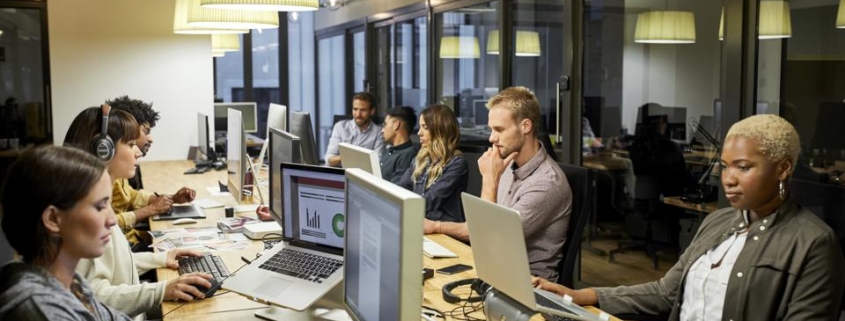The New Normal: Four Lessons From 2020 That Have Reshaped Business
In what can only be described as a tumultuous year, 2020 will have a lasting impact that will be felt for decades to come. In the early months of 2021, it’s become clear that many aspects of business, and life in general, will never fully return to what they once were.
New ways of working and conducting business were prompted by the pandemic and led to momentous shifts in consumer behavior. Covid-19 forced a reprioritization of creative problem-solving and innovation, the likes of which we haven’t seen since the Industrial Revolution.
2020 afforded the world an opportunity to take a step back and consider our approach and, more importantly, question everything. Innovative thinking compelled us to ask better questions and seek superior solutions.
Here are the four most important lessons from 2020 that won’t soon be forgotten. Welcome to the New Normal.
1. Think As Though The Present Is Now The Future
Contrary to what you may think, 2020 didn’t create anything new, per se. When Covid-19 gripped the world, there were a series of changes already underway in the marketplace.
Consumers’ preference for shopping online was eclipsing that of in-store. Countless delivery services were launching apps, competing to change the way goods are received and how fast. The ability to work from home was becoming less rare and recast as a valuable benefit to attract and retain talent. More and more brands were not only speaking out on social justice issues but taking action and inspiring others to do the same.
2020 accelerated the adoption of these trends and phased out what was or near obsolete. What might’ve taken five years to develop in the marketplace, the effects of the pandemic brought about in less than two. What business leaders should take away from this mass acceleration is the need for foresight. The ability to see three, four or even five steps ahead of the competition will be the difference-maker in readying your business to be at the forefront of disruptive trends the moment they are accepted as conventional.
2. Let Demand Be Your Guide
Consumers undoubtedly miss some aspects of in-store shopping. They may even return to brick-and-mortar stores for urgent needs when it is safe to do so, but ultimately, they will continue the convenience of virtual product acquisition they grew accustomed to out of necessity. In many cases, kinks in service and delivery have been remedied, and vendor and service provider preferences have become well-established.
DoorDash is a perfect example. The suburbs are an ideal place to quarantine due to the distance between neighbors and households with plenty of parks and outdoor spaces. This led many to flee more densely populated urban hubs for the suburbs, driving a boom in the housing market as mortgage rates dropped to historic lows. DoorDash’s presence in the suburbs was minuscule compared to city centers, and there was no urgent need for restaurants to sign on. While consumers weren’t leaving their homes often, DoorDash and other delivery services rapidly expanded to these regions to meet this immediate demand.
Let’s also consider luxury brands that sell status items that are meant to be brandished. In 2020, consumers began asking themselves if designer bags, shoes and watches were really worth it. Other than by leveraging social channels, who would they show off their latest luxury purchase to while home for the entirety of most days? Particularly during a period of unrest. This threat forced many luxury brands to pivot their products and rethink their marketing to meet incubated living.
3. Work Isn’t A Place; It’s Productivity
Just over a year ago, a large portion of the workforce began working from home, and like many other business leaders, I was unsure if it would be possible for our team to operate at the same pace in a remote environment. I, alongside many others, quickly learned this was absolutely possible, and then some.
This isn’t to say there weren’t learning moments along the way, but largely, businesses around the world have returned to, and in some cases surpassed, the productivity levels from before 2020. Our team at Aura is working harder and more efficiently than ever before. So much so that in a recent company survey, the majority of Aura employees noted that they would prefer not to return to the office. And we think this trend will continue across many businesses that have successfully pivoted to being fully remote.
Employees are increasingly relocating to warmer parts of the country with lower costs of living. Companies have started exploring the relocation of their headquarters operations to those same markets in order to cut costs and be ever-present to the growing populations in these emerging markets.
4. Asynchronous Is The Future Of Work
The line between what we once knew as work-life balance has been blurred to create what we now know as “asynchronous” ways of working. Asynchronous working is essentially work-life integration, which was on full display over the last year.
Growth-focused leaders have already taken note of this shift and are implementing measures to instill asynchronous efficiencies into their organizations. Efficiencies like a focus on best uses of time, mapping out business plans beginning with the end decision point in mind, and outlining next steps to be assigned and completed out of sight by an agreed-upon deadline. This means companies should begin prioritizing time and shift their operations to function backward, beginning with goals first.
In order to become fully asynchronous, there needs to be a philosophical mindset alignment throughout the organization. We need to accept that normal working hours may soon phase out. Meetings will no longer happen to simply inform others. Instead, there will be a focus on preparation and assigning goals and next steps to make the best use of everyone’s time. Asynchronous means truly ensuring your enterprise is more connected to value time and the employee base at large.

